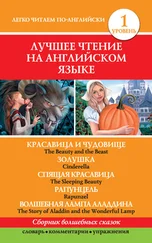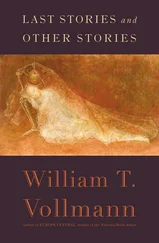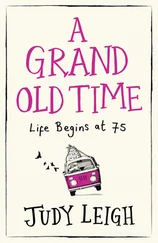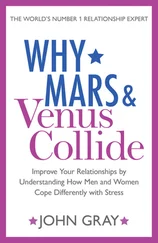“When Yuya does her flower dance, is that an abstracted dance that expresses a general female role? After all, the choreography never varies— ”
“It cannot be general when you perform a person. So you must as I said express new discoveries that the performer himself has seen just now .”
“What is the difference between female beauty as represented in Noh and the female beauty of real women?”
“They are not different,” he insisted. “When you perform, you discover the role’s mind and the beauty and try to represent it. It’s not that it’s different. There’s no general beauty in the world. Or you can say that general beauty is not living beauty. If you just collect together beautiful points, that cannot be a human being. The human being has defects as well as beautiful aspects. That is why general beauty cannot exist .” 4
Could that help to explain the alluring reclusiveness of a Heian court beauty, the triumphant incompleteness of a mask? Could it be the reason that the true flower must perish?
“SHINING BLUE IN THE SUN”
In 1901, when Fenollosa was studying Noh, a lady named Alice Mabel Bacon published a book entitled Japanese Girls and Women . The Empress had appeared in public with white teeth more than a quarter-century before. But many specifics of “general beauty” continued to be the same, so that our Occidental lady opined:
The ideal feminine face must be long and narrow; the forehead high and narrow in the middle, but widening and lowering at the sides, conforming to the outline of the beloved Fuji… The hair should be straight and glossy black and absolutely smooth… The eyes should be long and narrow, slanting upward at the outer corners; and the eyebrows should be delicate lines, high above the eye itself. The distinctly aquiline nose should be low at the bridge… The mouth of an aristocratic Japanese lady must be small, and the lips full and red; the neck… should be long and slender… The complexion should be… a clear ivory-white, with little color in the cheeks.
“That reminds me of The Tale of Genji ,” said my Japanese interpreter when I read it to her more than a century later.
“Would you say that it is accurate?”
“At that time it was correct, but it is way different from what people nowadays think.”
“And for you, what is the perfect female face?”
“Like some of the actresses,” she said, “although they are not typically Japanese. The eyes are big. 5The eyelid has two folds, unlike mine.”
A fortyish first-generation Japanese-American immigrant laughed at Alice Mabel Bacon and said: “I totally disagree! That is so weird! By today’s standard, it’s not beautiful face at all. Nowadays, the hair should not be black, but light brown. The eyes should be wide. And some girls have an operation to make the eyes a little bigger. The mouth should be big. I think a longer neck is good; Caucasians have that. I think triangle forehead is still okay. The eyelids should have two folds, like a Western face.”
She then said: “My grandmother used to tell me that the beautiful face is long neck and small mouth and long black hair, hair shining blue in the sun…”
Chapter 8. Aya Kudo and the Zo-onna
A Porn Model Compared with a Noh Goddess
Scanning into my computer an image of a certain zo-onna mask, then likewise capturing the face of the erotic model Aya Kudo, whose never quite nude form graces every page of the glossy hardcover tribute to her entitled Koi me no rippu , which is to say Heavy Love Lipstick ; and rotating her scan nearly forty-five degrees to correct for the fact that in the double-page spread from which I wrested it, the divine Miss Aya was sprawled on her side in a bathing suit, red-lit, with her right hand out before her, palm down like a Sphinx’s paw, while her left vanishes in her rich hair in order to better pillow her diagonally inclined head; next resizing the two scans until their eye-to-mouth distances were approximately the same, I became able to make certain comparisons. Never mind the difference between the ivory complexion of the zo-onna and Miss Aya’s red-and-orange-flushed face; who knows what color the young woman’s face really is?
Each of these fantasy ladies may be said to have what Tanizaki called “a slender, oval face of the classic melon-seed type, the kind of face you see in ukiyoe woodblock prints,” although if they vary with respect to this characteristic, it may be that Aya Kudo possesses what may be nearer to “a face well-rounded in the modern style” (those words were written in 1686). The lips of Aya Kudo are shinier, glossier, wetter and fuller than those of the zo-onna . The width of each mouth is approximately the same. Interestingly, the height from the top of the upper lip to the bottom of the lower is also comparable, but the porn princess’s lips appear considerably puffier and fleshier, in part because the zo-onna ’s upper lip narrows in the center by almost half; moreover, Aya Kudo’s lips are parted just enough to show the tiniest glint of two upper teeth, whereas the zo-onna ’s lips are open and half-smiling in that meditatively melancholy Noh way, allowing us to see a crescent of pure black emptiness alongside the top of the lower lip, crowned by a curving strip of at least four or five bluish-black upper teeth. So the zo-onna ’s lips are narrower; she can open them to breathe, and, of course, to sing, without taking up more space in doing so than the nearly closed lips of Aya Kudo.
Meanwhile, the Noh mask’s distance from lower lip to chin is nearly twice that of Miss Aya’s face.
It is a strange exercise to gaze back and forth between the two visages. The zo-onna ’s features are so perfect that by comparison the short chin of Miss Aya seems almost deformed. And the woman was given the ultimate twenty-first-century accolade for her loveliness: we paid her! — But here I remember another juxtaposition I made, between a waka-onna mask and the bound model in JaponiSMe , whose name I do not know; I decided to match these faces against each other because both were turned slightly downward and to the side (although I admit that the S/M model reveals herself in three-quarter profile while we see the mask nearly head on). In this case the longer chin of the Noh mask makes her almost witchlike in comparison to the sweet young girl with the rope around her neck; the smile of the waka-onna is, as H. P. Lovecraft would say, eldritch, whereas the girl is simply human, lovely and sad, a demure sacrificial victim. The waka-onna ’s sharply upcurving smile partakes of craft, although as usual her eye-holes gaze at a point between us and her, so that one has no need to feel cautious around her; she cannot even see me; she is engaged with somebody on the other side of the Bridge of Dreams. — So how can I say that a long chin is superior to a short chin? It is not that the waka-onna is less beautiful than the bondage model. And when I turn back to Aya Kudo and the zo-onna , I find myself similarly at sea. Whose chin is most beautifully proportionate? Side by side, each undermines the other; alone, each becomes perfect.
The eyes of Aya Kudo are wide, innocent, little-girlish and slightly surprised. They gaze upon me candidly. Her parted lips add to the impression of trusting youthfulness. She seems to be on the verge of offering herself to me. But she and I both know that we will never meet. Her face, like the zo-onna ’s, is but an image.
The zo-onna ’s eyes are longer and much narrower than hers. The pupils, which of course are really holes, are not centered as are Miss Aya’s, but drawn in slightly closer to the nose. So how can I imagine that the Noh goddess sees me at all? Like her waka-onna sister, like the makeup artist Yukiko who gazes into my face but not at me as she paints my eyebrows on, she declines to reach me. She smiles, almost, or perhaps not; yes, with perfect concentration she gazes at something between herself and me, something in the black heaven she came from.
Читать дальше












